Every chess master was once a beginner! The High School Chess Club is back! If your student is interested in learning more about how to play chess and joining the club, he/she should stop by Room 138. The team hopes to set up tournaments and compete against other schools in the future! •The recorded history of chess goes back at least to the emergence of chaturanga—also thought to be an ancestor to similar games like xiangqi and shogi—in seventh-century India. After its introduction in Persia, it spread to the Arab world and then to Europe. The modern rules of chess emerged in Europe at the end of the 15th century, with standardization and universal acceptance by the end of the 19th century. Today, chess is one of the world's most popular games, with millions of players worldwide. •Chess is considered a sport by the International Olympic Committee (IOC) and many other organizations. While it's not an Olympic sport, chess is played in colleges and is recognized as a sport in over 100 countries.
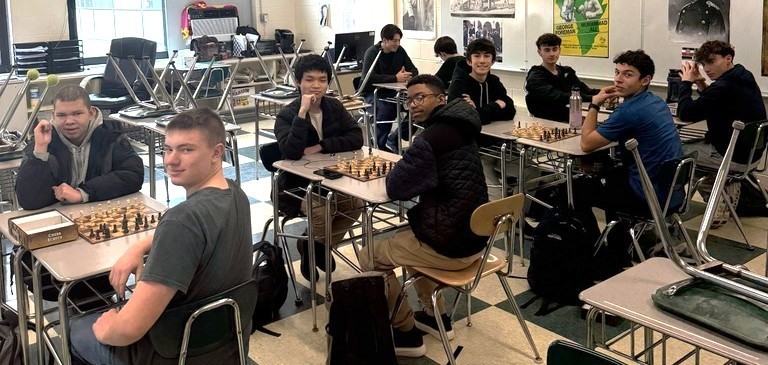
Lindsey McKernan’s ES kindergartners have been using “manipulatives” during math lessons! They using beans and chips to help with counting so they can visually see “how many” there are as they dive deeper in addition and subtraction work!
In this instance, the counters have a different color on each side. When using the beans, students counted how many red, and then added in the white ones. For the red chips, students counted how many they started with then took some away and counted how many we were left. Manipulatives help us visualize our adding and subtracting.
Math manipulatives are beneficial in kindergarten because they help children understand abstract concepts concretely, enhance engagement, and develop problem-solving skills by allowing them to physically interact with mathematical ideas. There are so many different types of manipulatives, too, such as counters, blocks, beads, geometric shapes, tiles, cubes and more!


March is “Music in our Schools Month” and the Middle School Music Department has been busy sharing music education facts (and some jokes) to students! This year’s theme is “United through Music.” To represent this theme, band, chorus and general music students made puzzle pieces which express their love for music. This display can be seen outside of the music suite!
•Music is a natural stress reliever, which is good for blood pressure and heart rate. Studying music helps people better express their emotions and manage anxiety. Musicians are also using their muscles when playing an instrument because they’re using their arm, core, and back muscles. Vocalists and instrumentalists also build stronger lungs.
•Like sports, music helps improve hand-eye coordination and also helps children develop their small motor skills. Music also promotes teamwork. Whether playing in a band or singing in a choir, teaches people how to work and get along with each other.
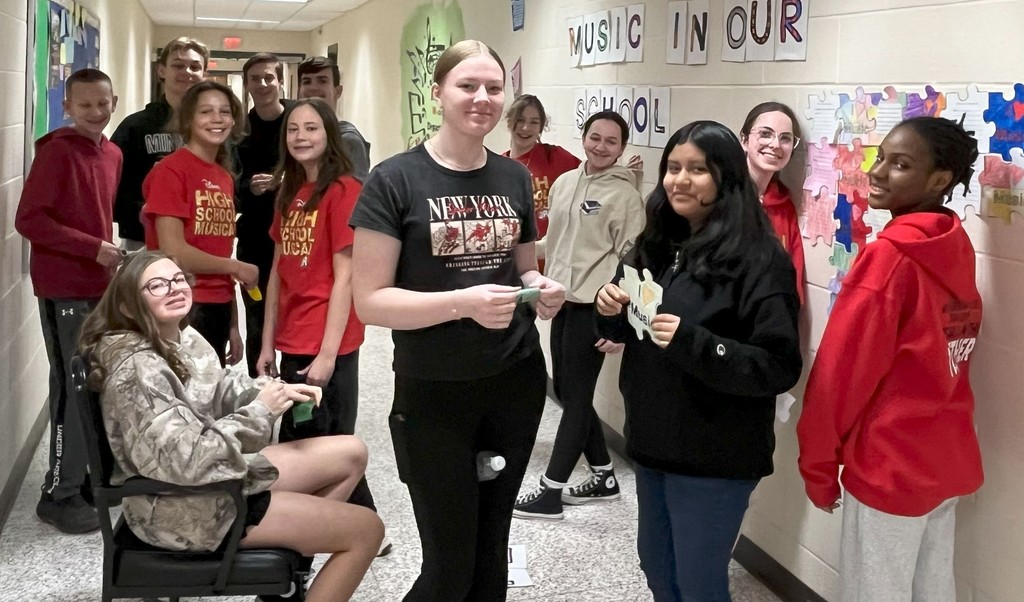



Spring is here! And our youngest students are learning about some of the signs of Springtime they may be seeing outside!
Did you know Springtime is a good time of the year for “rainbow spotting?” That’s because spring weather patterns often feature sunshine alongside rain showers, a perfect combination for rainbow formation.
After Marjori Bobish’s ES transitional kindergarteners learned about the signs of Spring, they made edible rainbows using Fruit Loops cereal and marshmallows! What a fun project for these little ones, which, by the way, also gives them some fine motor skill practice!
•Rainbows are formed when sunlight passes through raindrops, causing the light to bend and reflect, creating the colorful arc.
•The "April showers" proverb is a good reminder that spring is a time when rain is common, and when combined with sunshine, rainbows become more frequent.






Otisville Elementary’s PBIS and Diversity committees worked together today, March 28, to continue the school's “One Book, One School” year-long initiative, with faculty and staff switching up classrooms to read James Catchpole’s “What Happened to You?”
The book is first-ever picture book addressing how a disabled child might want to be spoken to. It tells the story of a boy living with a physical impairment of the leg. Joe is faced with a slew of questions on the playground about what happened to his leg: “What happened to you?”
When Joe continually diverts the questions posed by the other children, their imaginative guesses become more elaborate much to Joe’s frustration. The book offers a gentle, yet matter of fact way, that makes the reader (no matter the age) on asking about one's disability in a respectful and empathetic way.
Earlier in the week, students were given clues as to who their mystery reader would be.. Each classroom had two staff members read to the students in each room. Teachers from the previous grade read to their older students. It was a lot of fun, with some students getting a chance to visit with last year’s teacher! Most importantly, it was a great opportunity to reinforce important themes of respect, caring, empathy when encountering any one with a disability. Ask them about it!










High School Regents Biology teacher Kimberly Jordan is proud to share her students’ stellar project work tied to their recent unit on heart health and the circulatory system!
Through interactive and immersive learning experiences, students gained a comprehensive understanding of the heart's structure and function, as well as essential strategies for maintaining cardiovascular well-being through nutrition and exercise. They took part in interactive lessons that emphasized the importance of healthy habits in preventing circulatory disorders, and had a lot of fun designing and building creative 3D model of the heart using various mediums!
It’s true….even the big kids have fun using Play-Doh in class!
“By exploring real-world applications and potential health consequences, students developed a deeper appreciation for the value of self-care and proactive wellness,” Mrs. Jordan said. “This engaging and informative unit has empowered students with essential knowledge and skills to prioritize their heart health and overall well-being.”
See more photos on the district's Facebook page: https://www.facebook.com/MinisinkValleyCSD

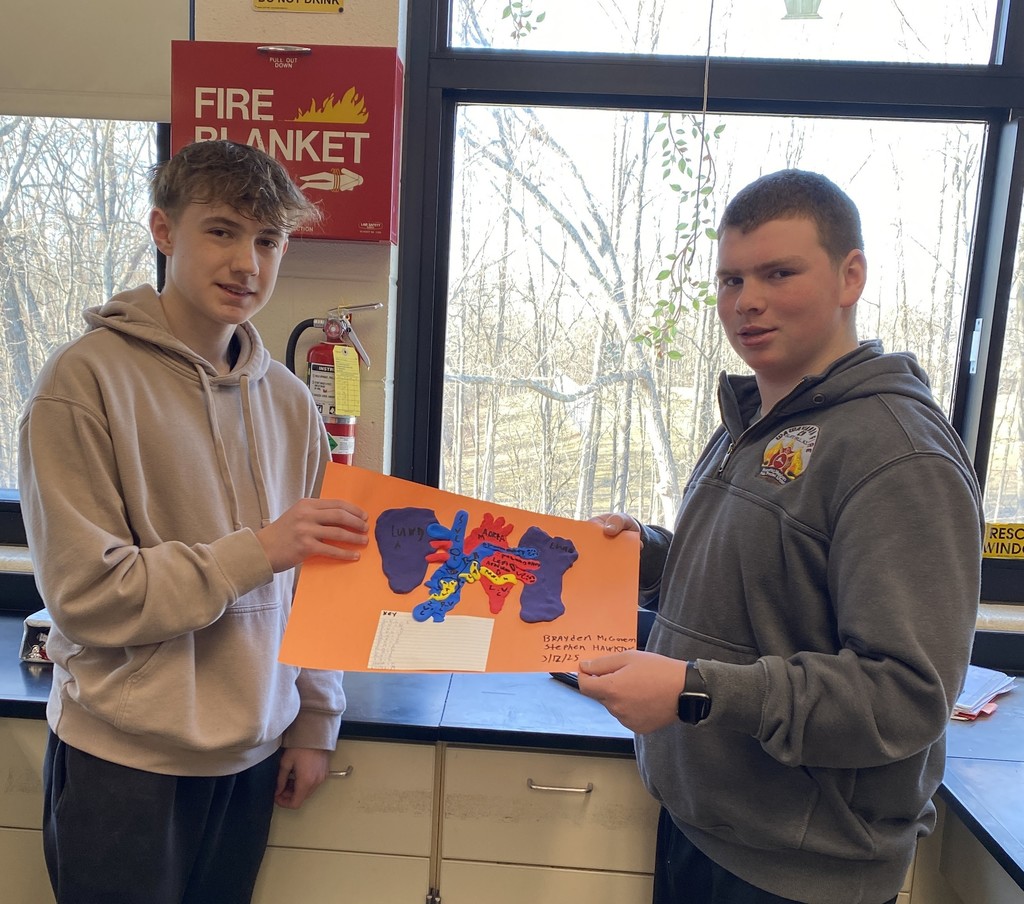







FORGET MARCH MADNESS, IT’S 'MOZZ' MADNESS!
We love, love, love it when members of the business community visit our schools to offer our students a memorable learning experience!
Meet Master Mozzarella Maker Gregory Lararia of Adams Fairacre Farms in Newburgh and Middletown! Mr. Lararia, who runs Adams’ mozzarella shops, visited all of Victoria Ingrassia’s eighth-grade FACS classes earlier this week to give students a tutorial on how to make fresh, homemade mozzarella!
He shared his “mozz mastery” with students, explaining and demonstrating the very simple process to make mozzarella using curds, milk, hot water, some salt with a mixing and stretching technique sprinkled in. Then, students made their own “mozz!” And, it was simply delicious!
Students had a great time with a great hands-on learning experience. Thank you, Mr. Lararia, we appreciate your time and interest in teaching our students!
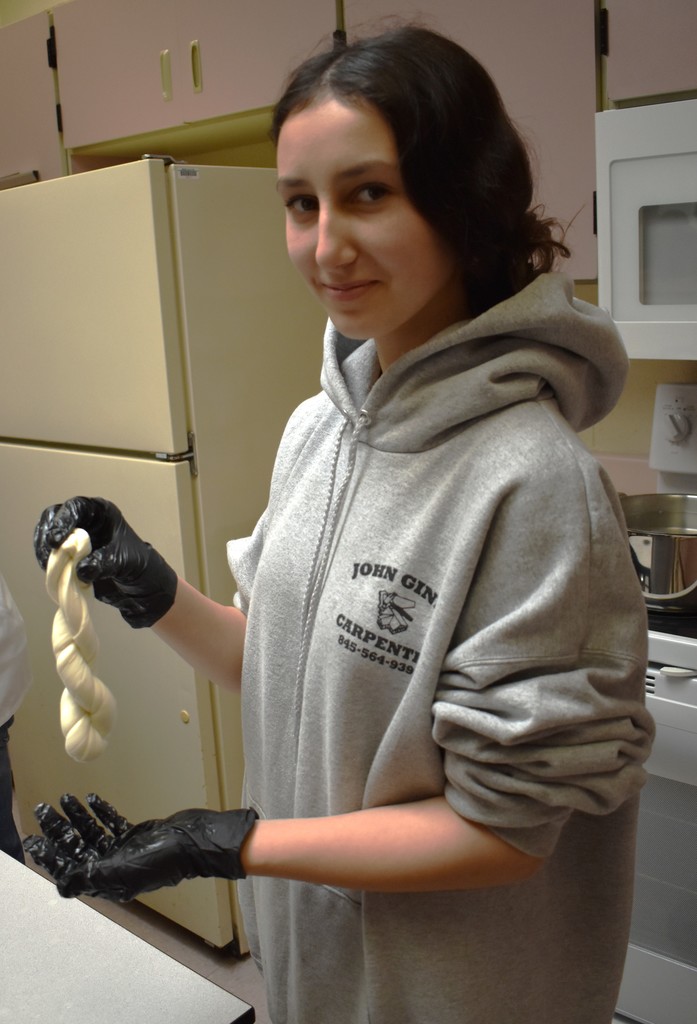
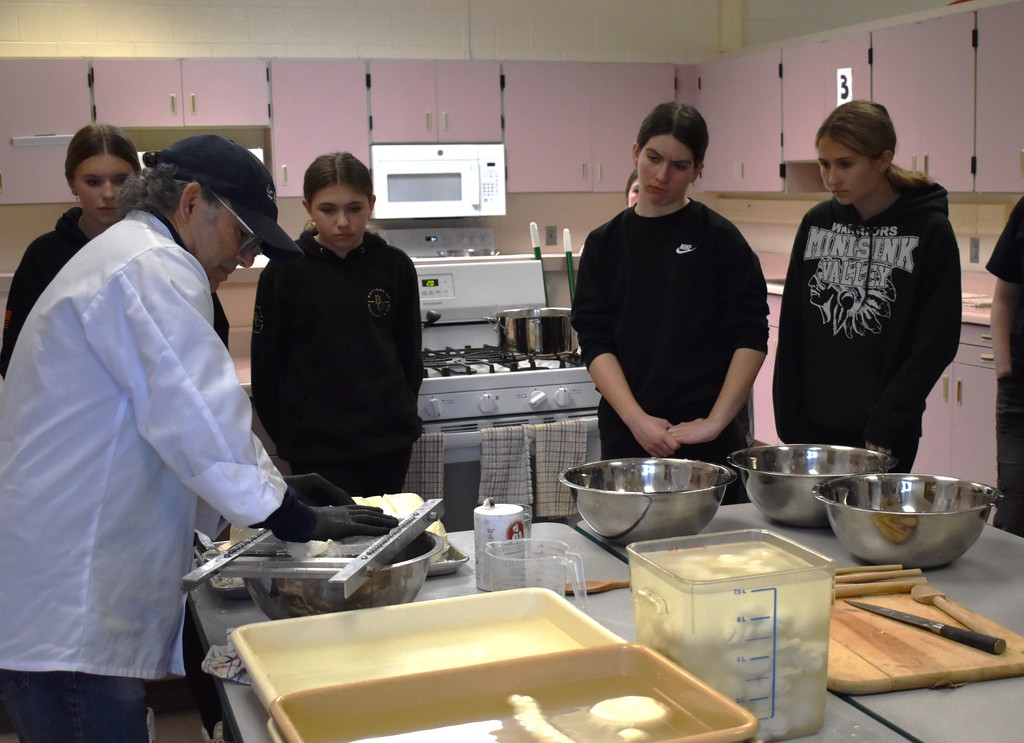
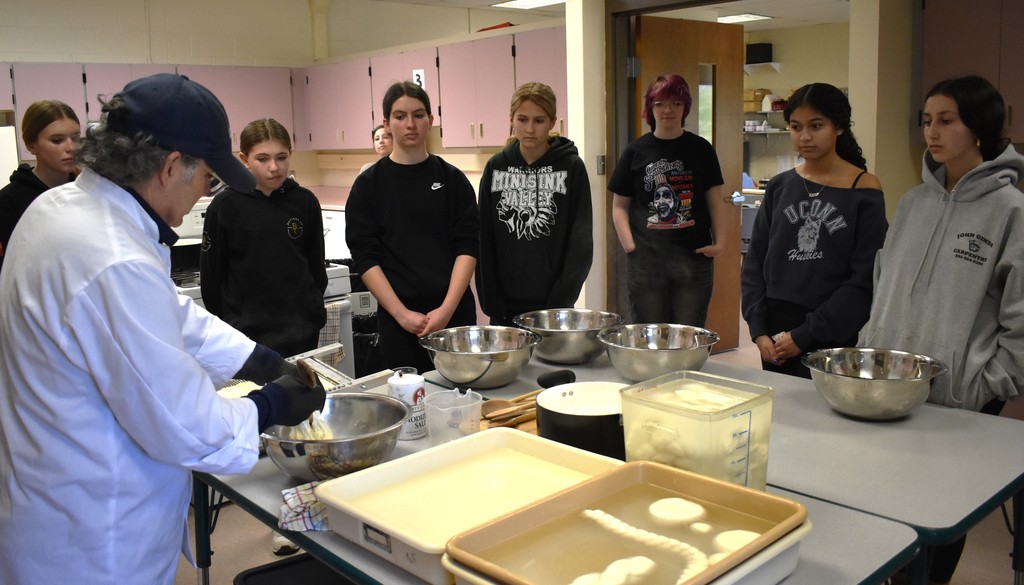
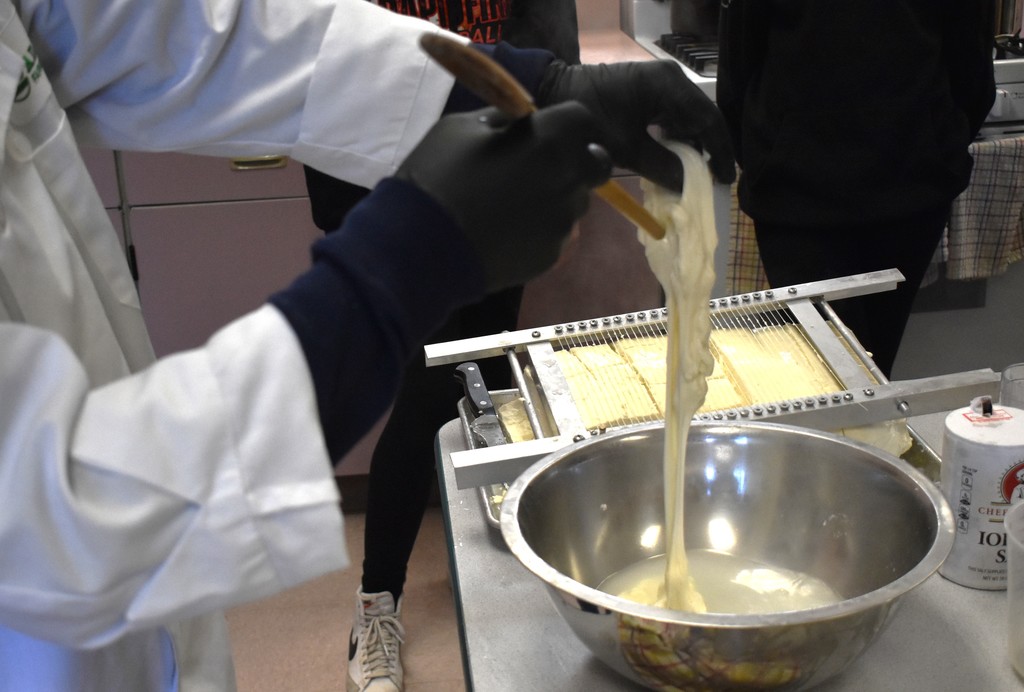
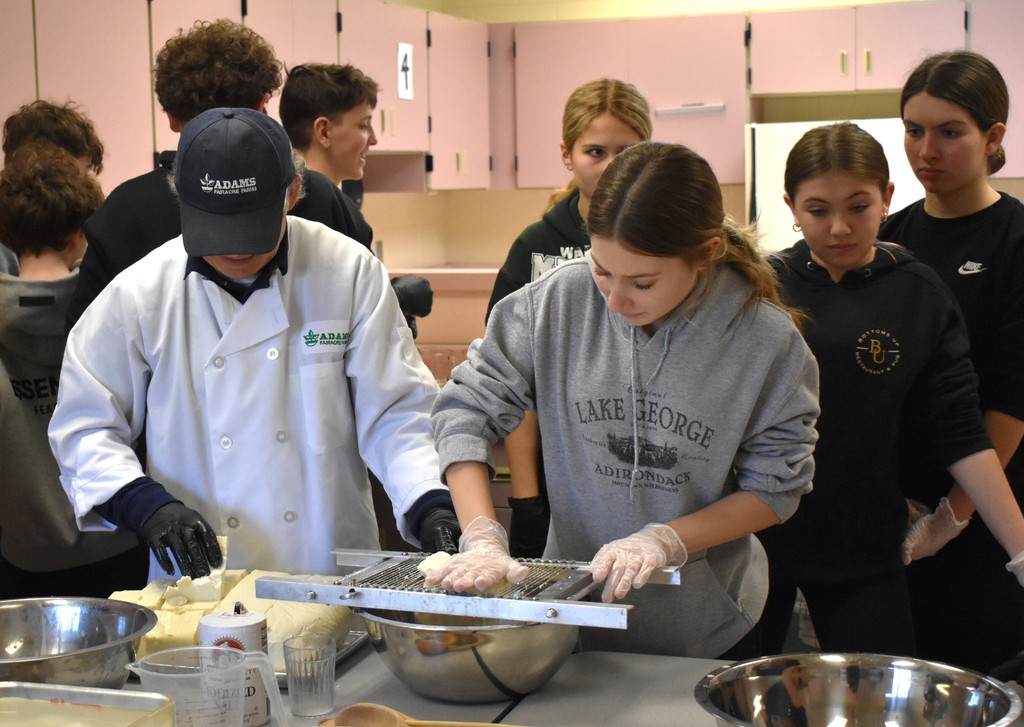
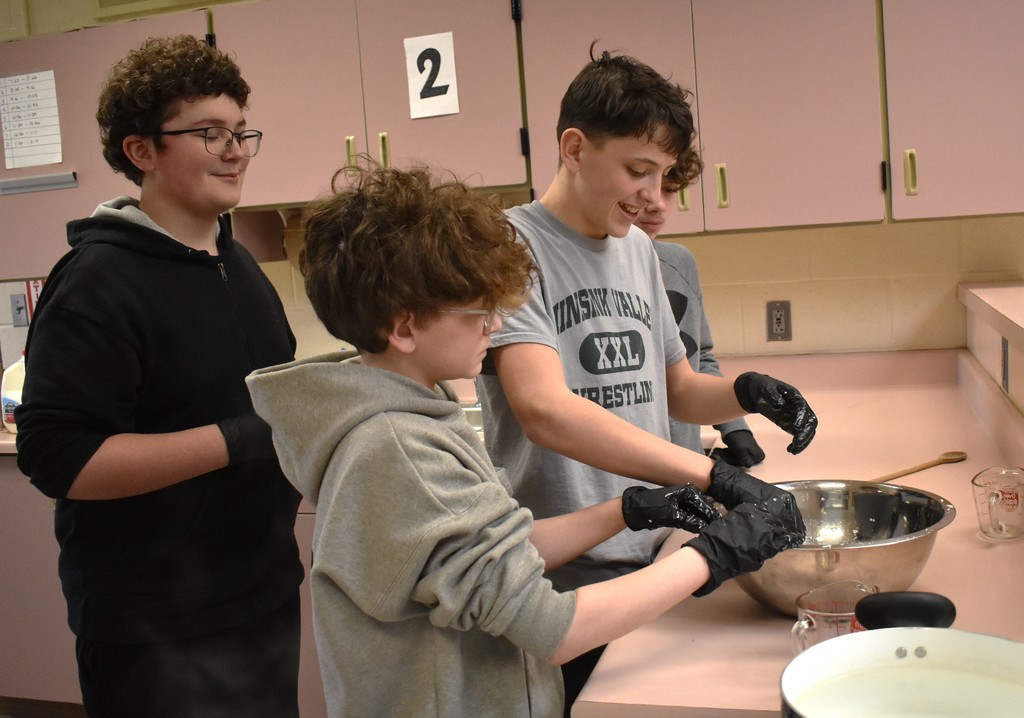
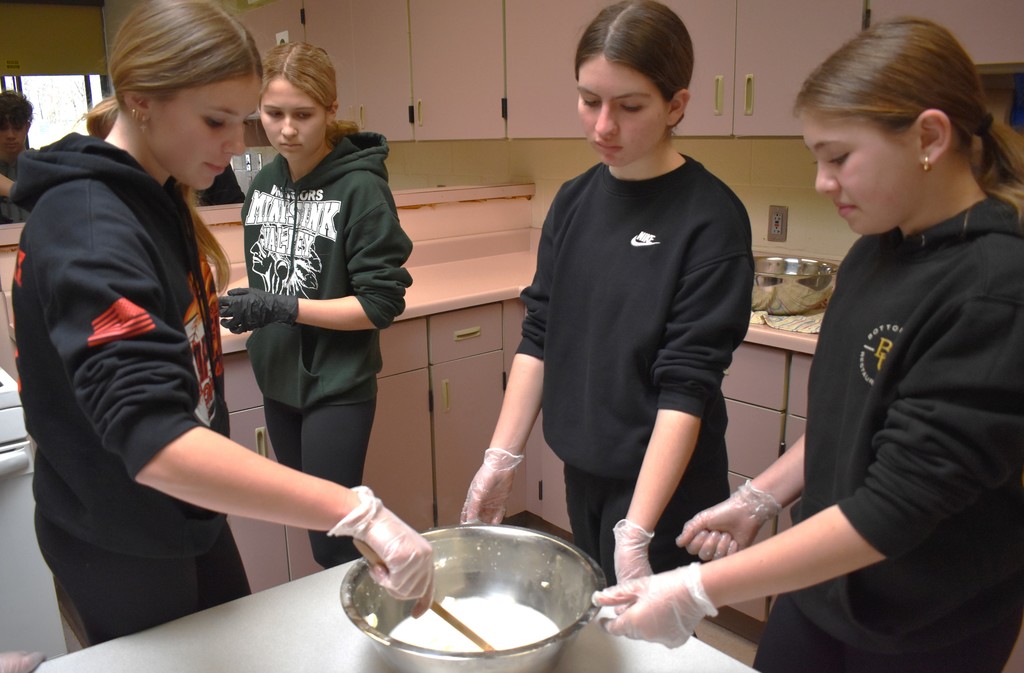
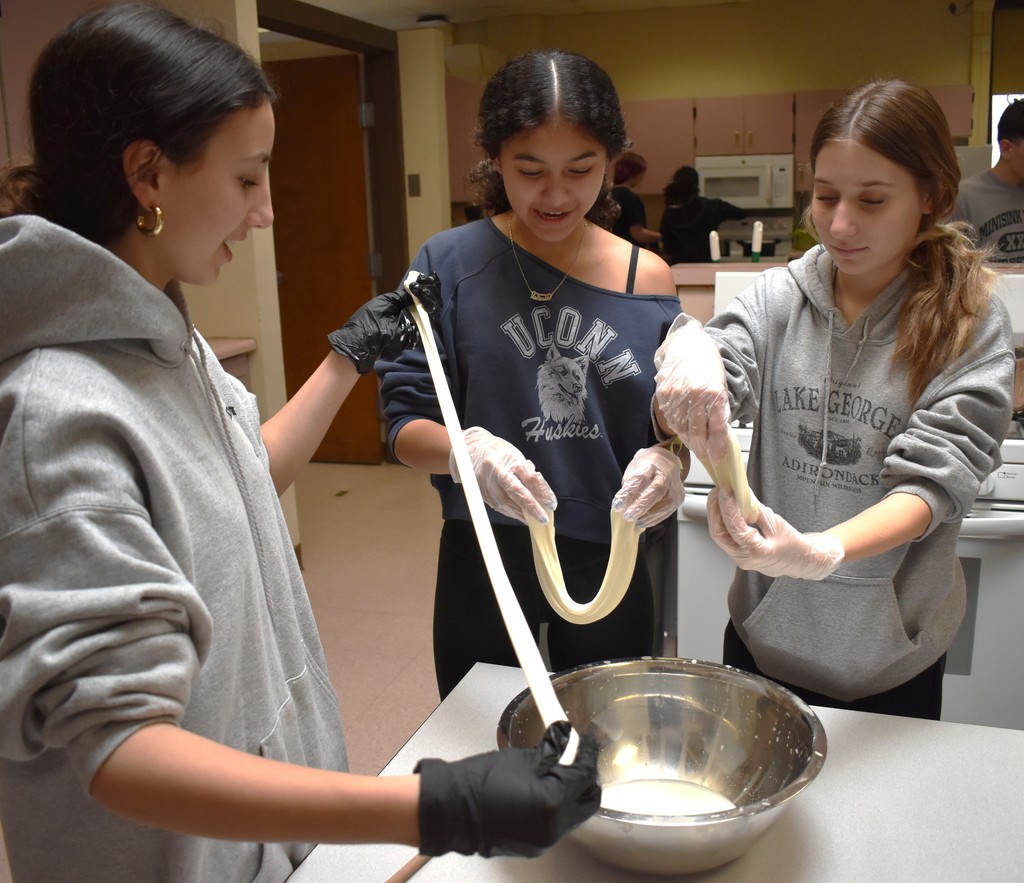
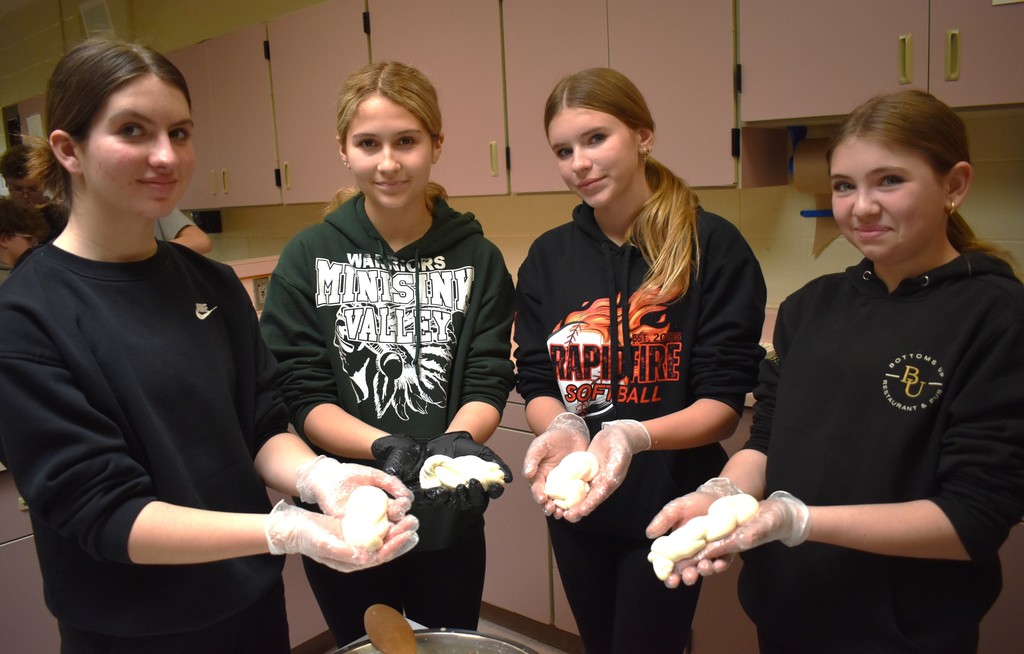
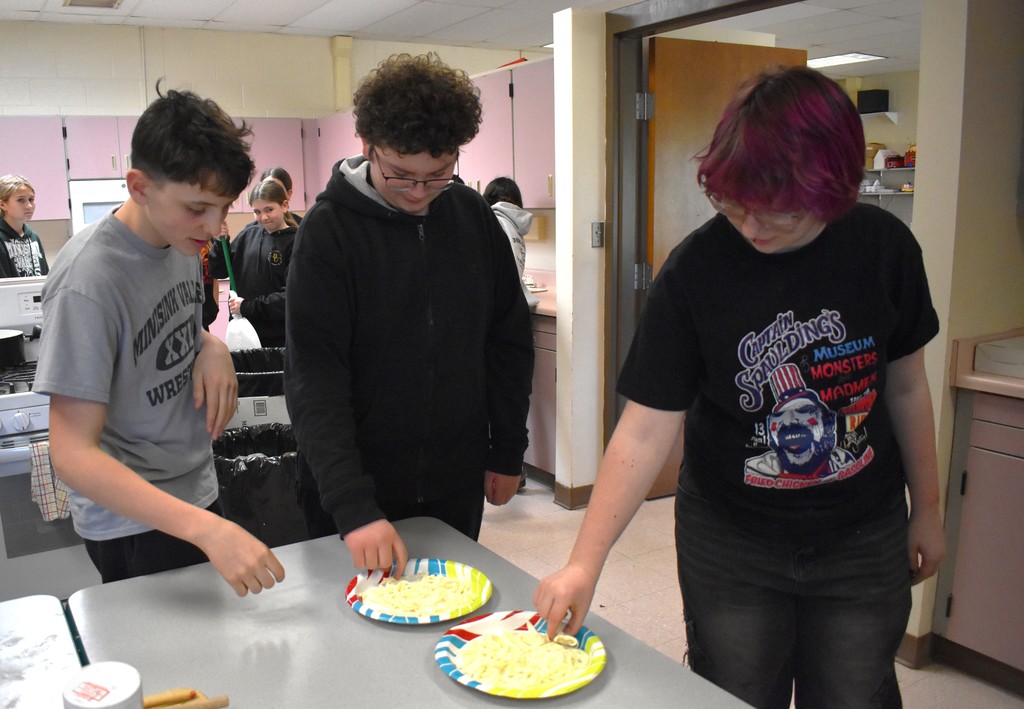
Tasha Buchler’s Otisville second and third-graders are so “eggs-cited” to have six fertilized chick eggs in their classroom, and are on stand-by to welcome the soon-to-be born chicks, which have an estimated due date of April 1!
The eggs arrived on March 11 as a gift from Zoe Lockburner, the 4-H Livestock Program Manager at Cornell Cooperative Extension in Orange County. Ms. Lockburner recently visited their class to check on the eggs and to help students “candle” them. Candling an egg means shining a bright light through it to examine the contents, especially the embryo's development, and assess the egg's quality, fertility and viability.
Chick eggs have an incubation period of approximately 100 days. They’re staying warm in an incubator, set at 100 degrees, and are turned about 15 times a day to mimic what their mother hen would do.
As part of her visit, Ms. Lockburner read students Sauer’s “A Little Chicken,” the story of a chick who faces her list of fears one by one, ultimately catching a bouncing egg just as her new sister hatches. Thank you, Ms. Lockburner, for the visit!






Last Friday evening's Elementary School Family Folk Dance night was so much fun! We love seeing families gathering together to take part in activities...it's even better when students can show their families what they're learning in the classroom...in this case, it's music class!
Thank you to everyone who participated and a special thank you to ES Music Teacher Cliff Loretto for putting this evening together!

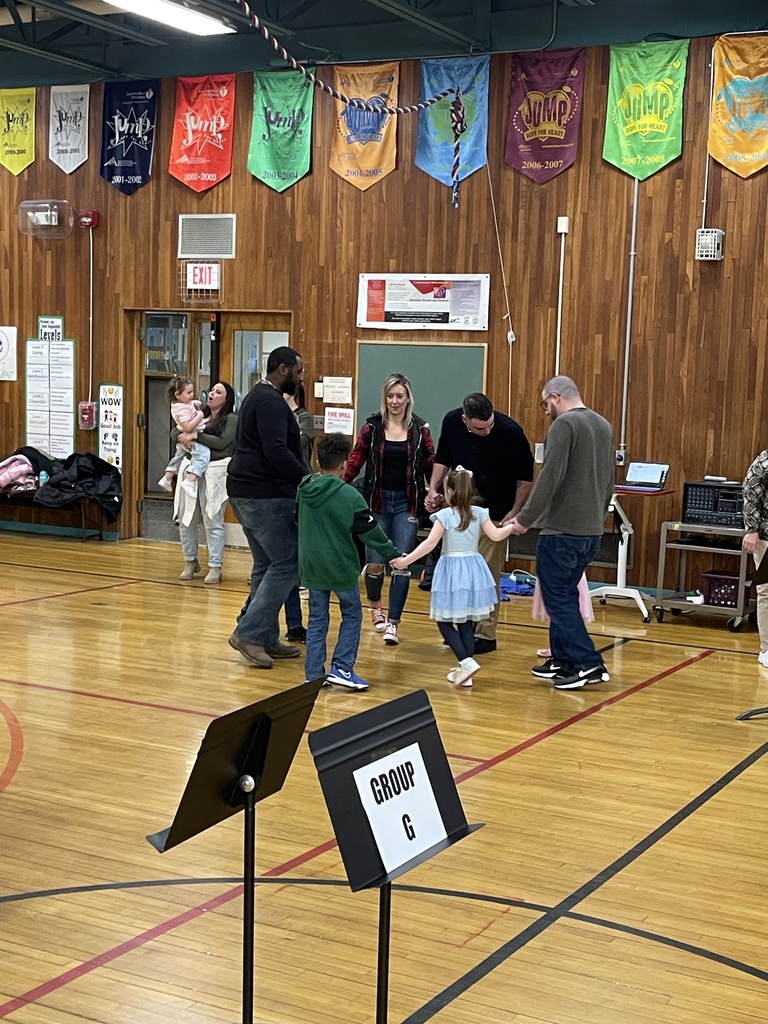


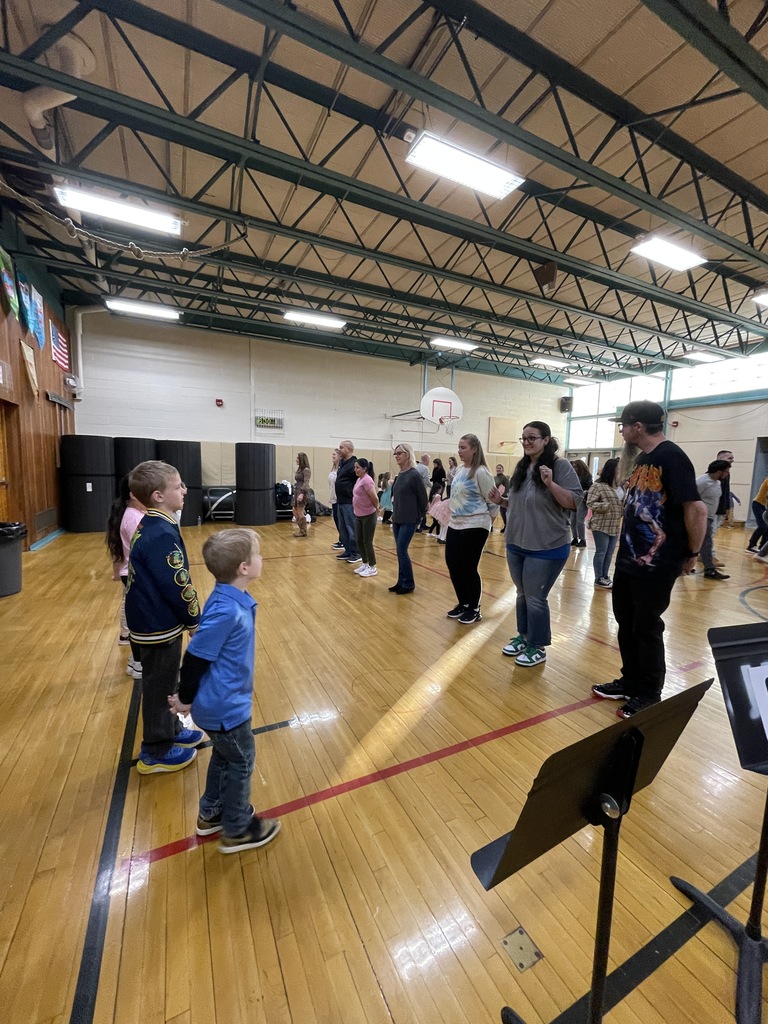


THANK YOU to everyone who attended and/or contributed in some way to Project Graduation’s March 22 Tricky Tray! The event raised enough to fund this year’s All-Night Graduation Party! Organizers said the evening was a huge success and they’re thankful for all of the donations made by families and local business as well as for all the volunteers who assisted in the evening’s success!

Kudos to the Minisink Valley High School Mock Trial Team, which was one of 13 school district teams participating in the first round of the State Mock Trial Tournament at Orange -Ulster BOCES on March 23!
For months, the mock trial team of Sean Bellew, Noah Haley, Morgan Varian, Landon Ordway, Malunga Kinzonzi, Josephine Witherow, Callie Hitt, Julia Wodzinski and Evan Washalski, guided by advisors Jonathan Grady and Ezra Clementson, prepared remarks focusing on a defamation case of a public figure to present their interpretation in a courtroom before a county judge. The team was also given valuable assistance from attorney consultants Michael Wolfs and Len Kessler---thank you to both!
To prepare for the tournament, each school has teacher-coaches as well as local attorneys working with them to help them with the nuances of the courtroom and presentation skills, an experience that cannot be duplicated in the classroom.
While the team is not advancing to the next level of competition, their tenacity and grit is certainly an example for everyone to admire! Well-done!


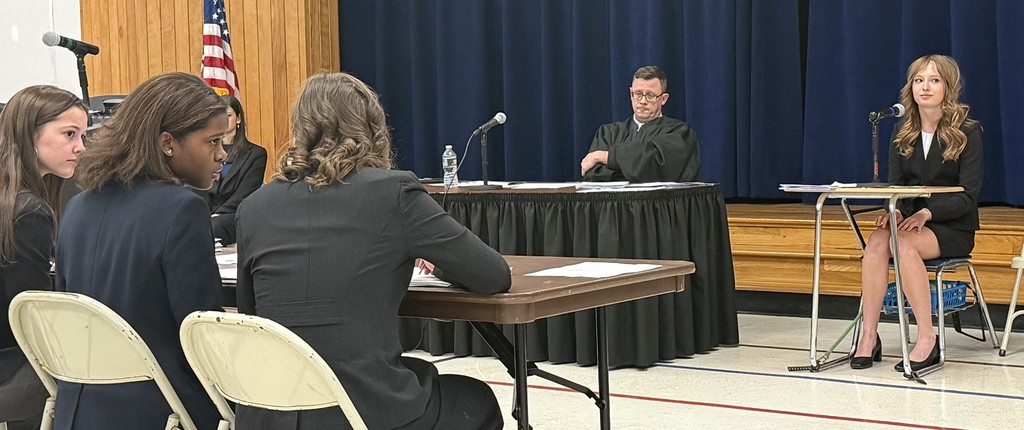


This recent Otisville Elementary lunch menu featured hot pretzels as part of the day's lunch offering! And it was a big hit, too! Take a look! REMEMBER, breakfasts and lunches are free to everyone! Please encourage your student to try both, and as an added perk, there's two less things for you to take care of each school day!
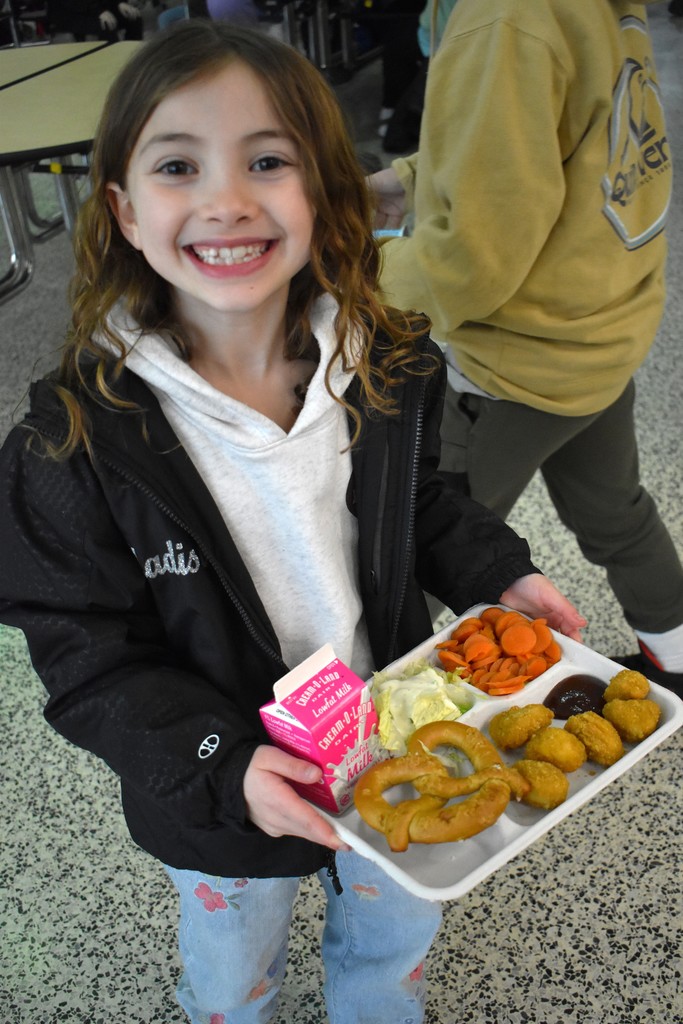



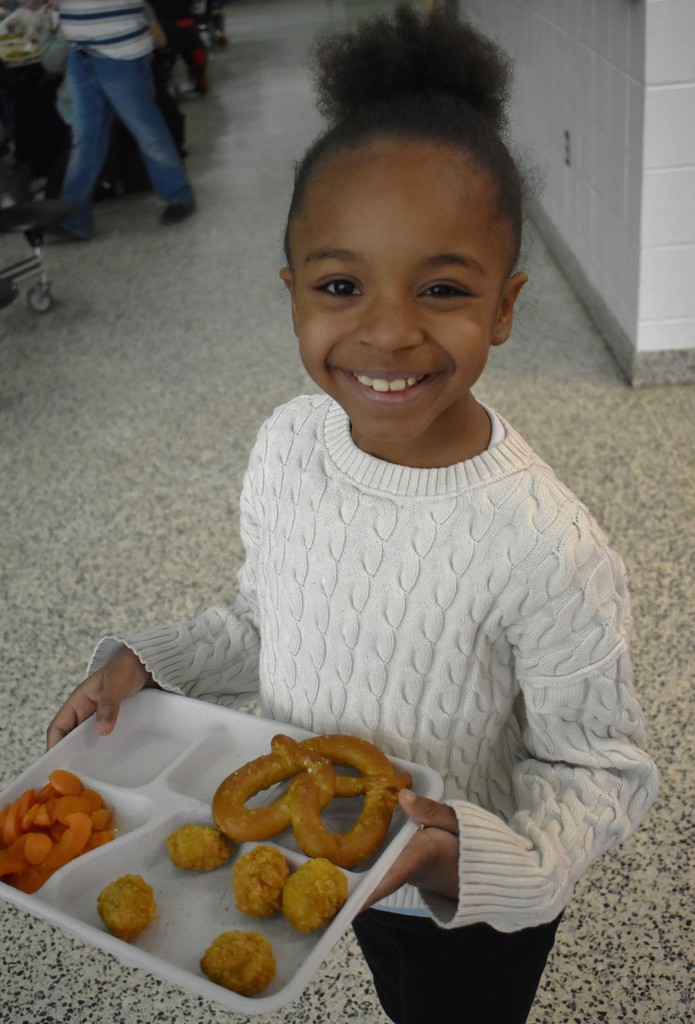
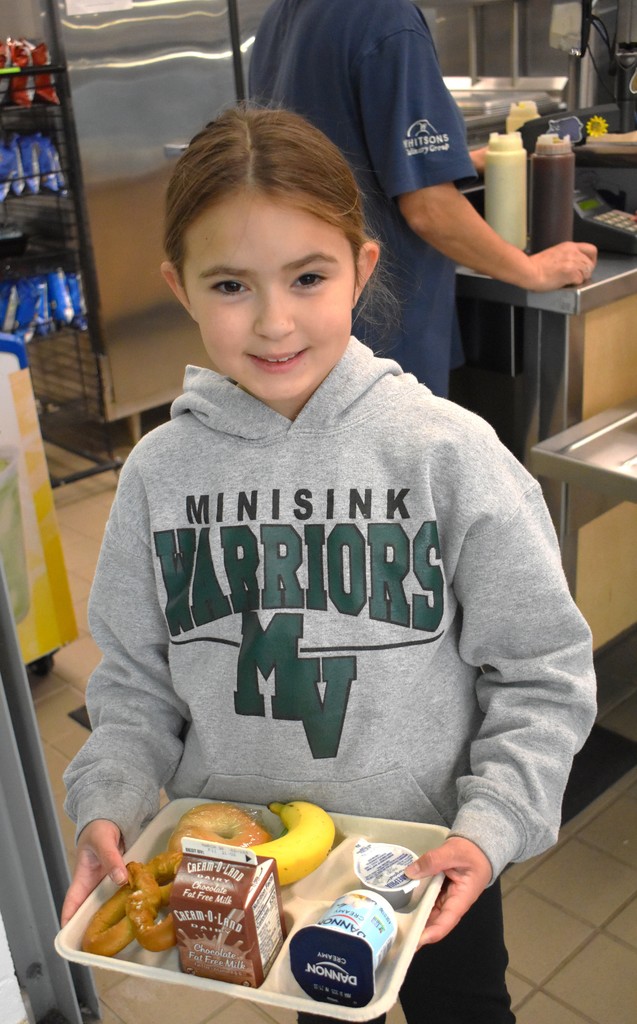
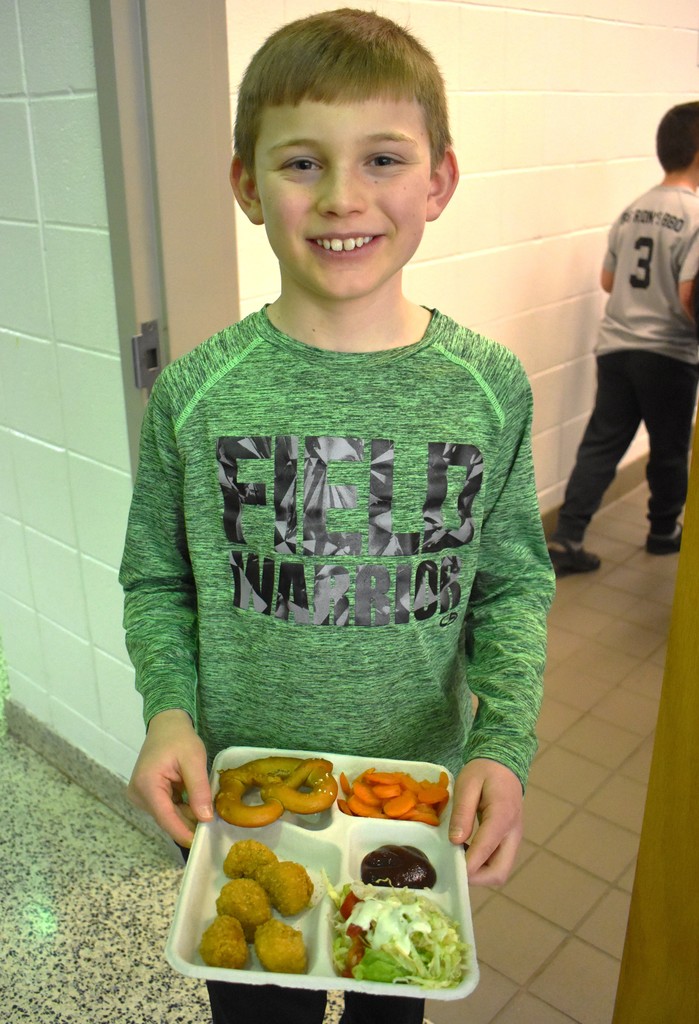
Guest readers from Cornell Cooperative Extension recently visited Otisville Elementary to read to students as part of their activities to mark Agricultural Literacy Week. Students were read a book about pumpkins and given a planting kit so they could plant pumpkins this spring! Thank you to former Otisville teacher Karen Krogslund, Gerda Krogslund and Ed Fairweather for stopping by!
Cornell Cooperative Extension's New York Agricultural Literacy Week (ALW), held annually in March, is a state-wide initiative that connects volunteers from the agricultural community with elementary school classrooms to share the story of agriculture through book readings and hands-on activities.





Leyla Johnson’s ES physical education students have been working on flexing and extending their muscles, moving through dynamic and static balances using different bases of support.
Students got to pick a letter of the alphabet or a number and try to create the shape of the letter or number with their body alone or with a partner. They had a lot of fun being creative and trying to guess what letters and numbers their classmates were making.
Then they got to try a variety of yoga poses and balances, along with working on mindful breathing to help them calm down and relax. They discussed how taking slow breaths in through their nose and out through their mouth can be helpful if they are ever worried, angry, upset or even out of breath from exercise to help calm down their minds and their bodies.
PLUS: As part of this, Mrs. Johnson’s music choices even looked to help set the mood for the class: Classic artists like Frank Sinatra, Nat King Cole, Ella Fitzgerald and Peggy Lee! Take a peek; these little ones were having a great time!
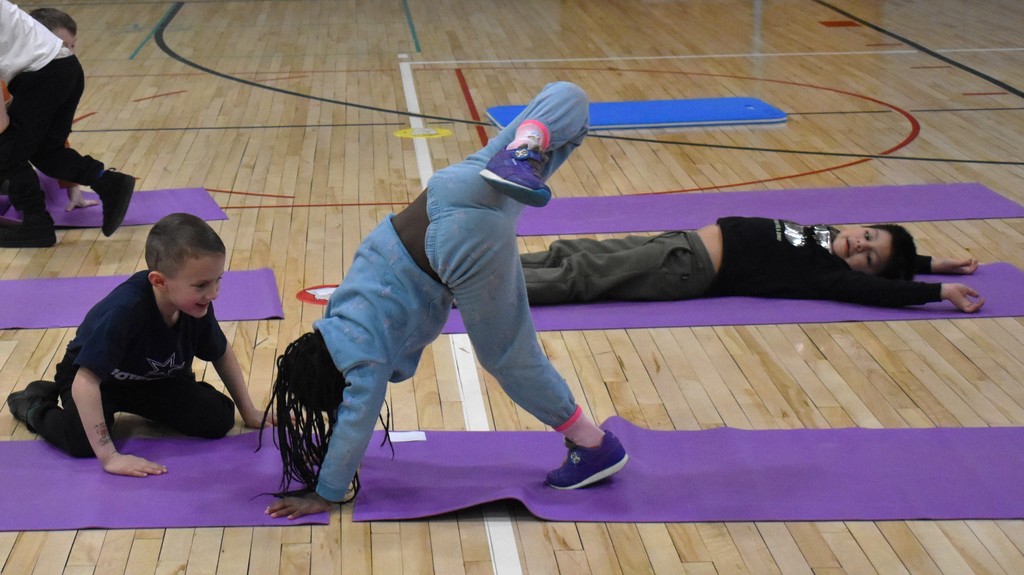

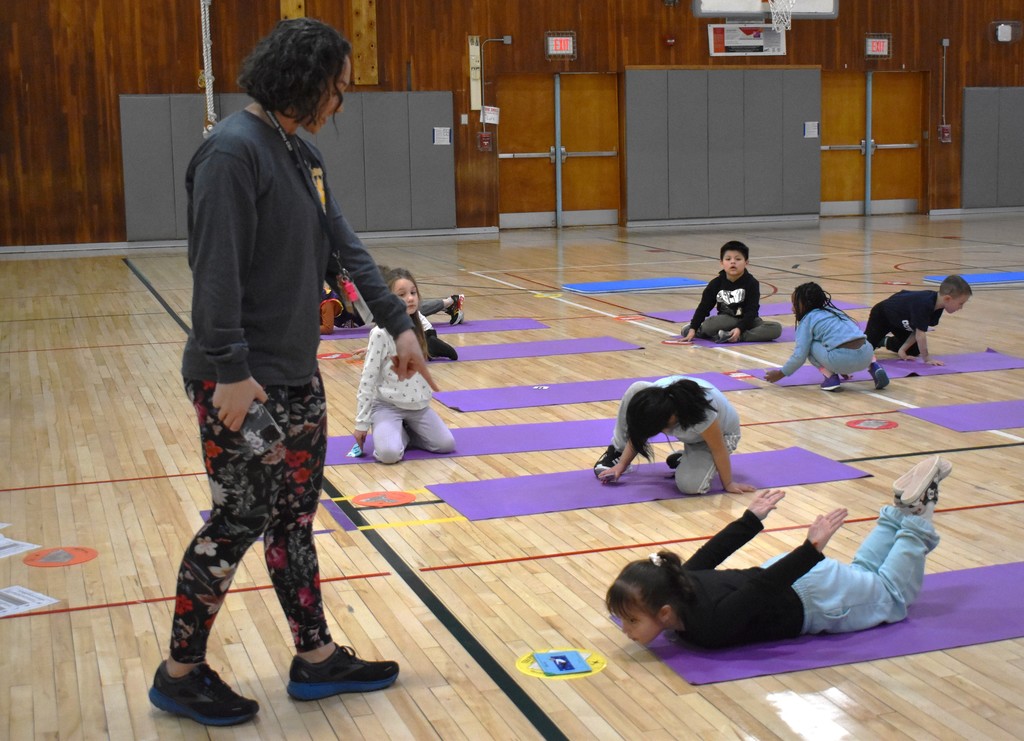
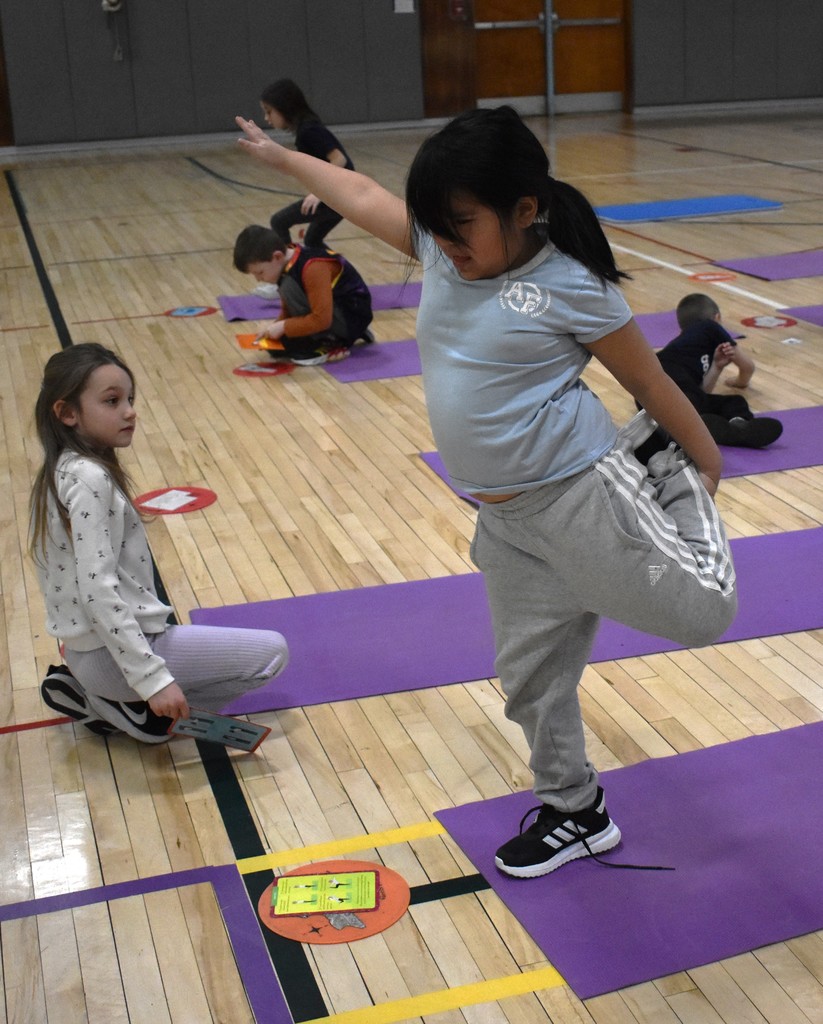
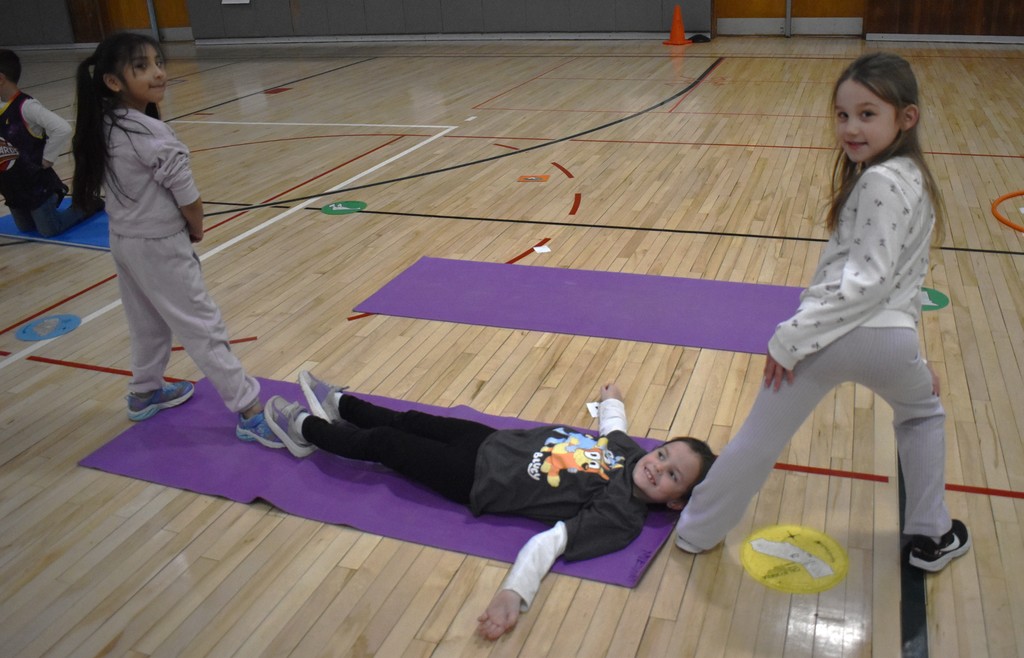
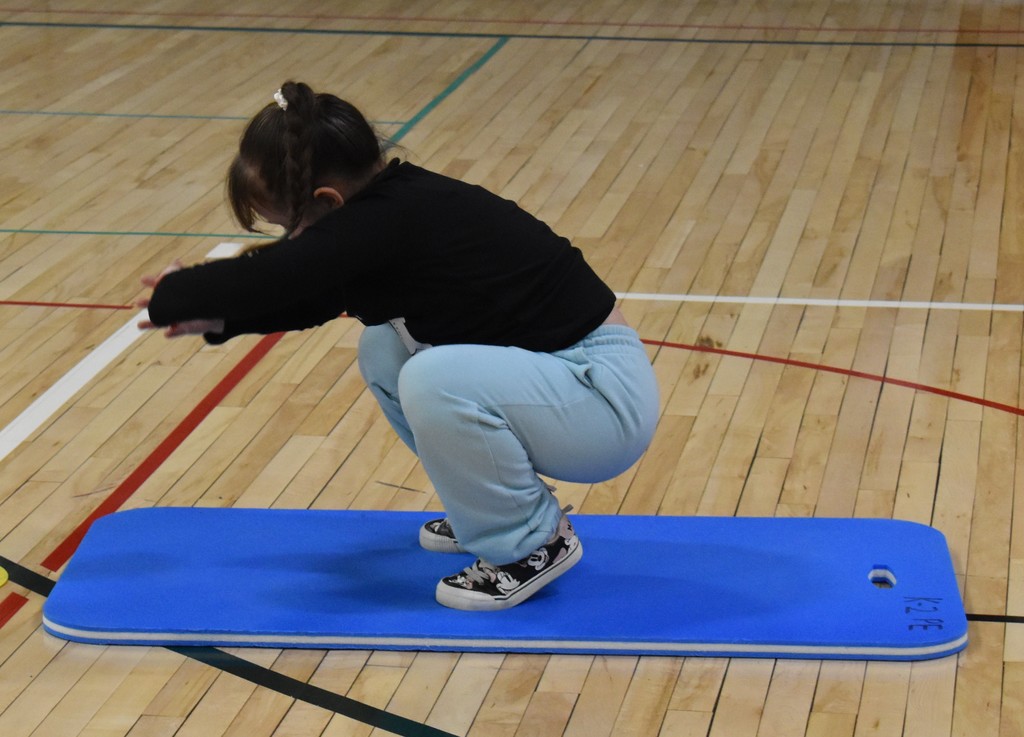
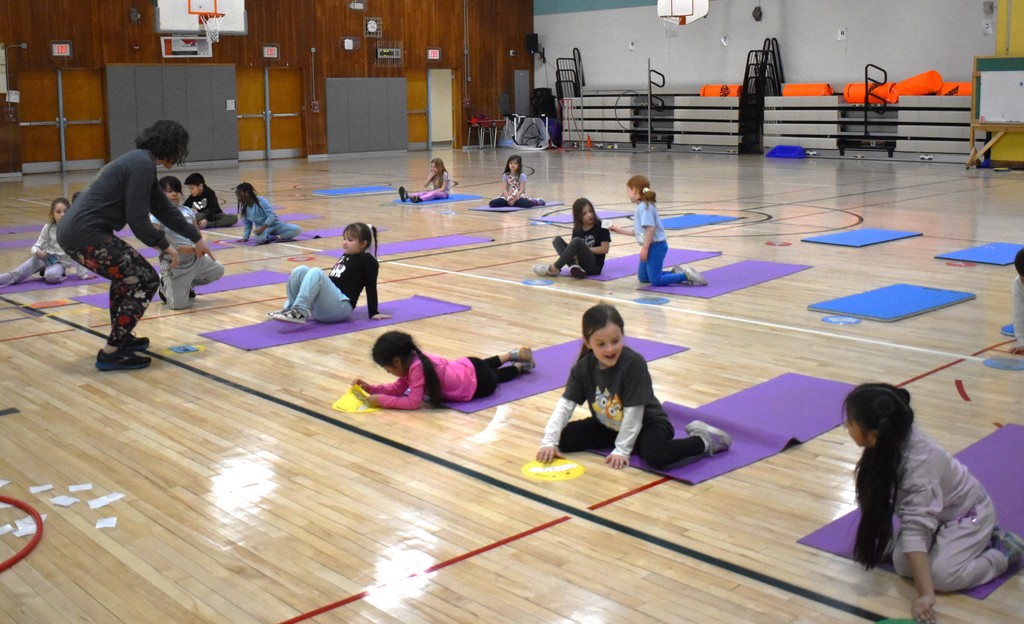
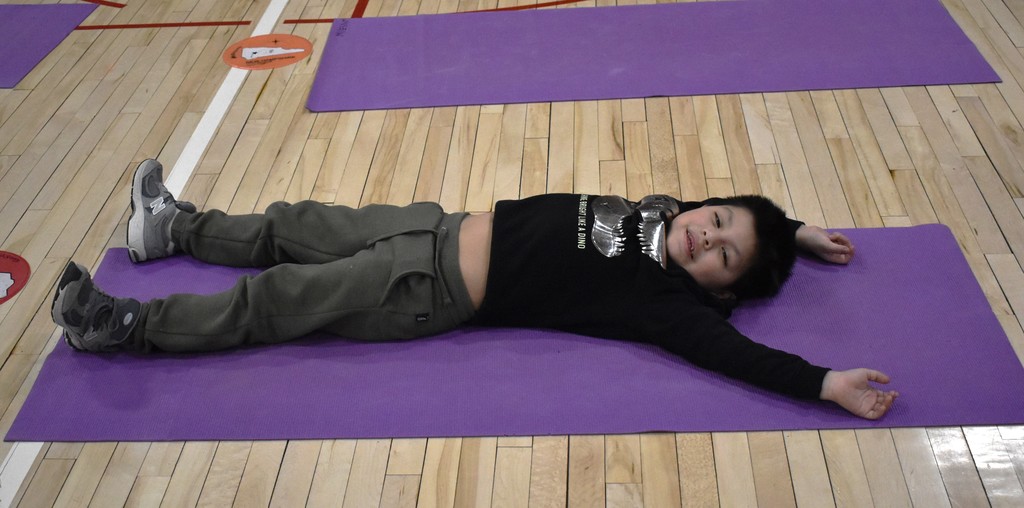
How do art and music and art manipulate emotions?
IS Music Teacher Deanna Feuerbach and IS Art Teacher Joan Giardina recently explored connections in music and art with their fifth-grade students in companion “specials” lessons! What a great, creative idea!
In music class, Ms. Feuerbach asked students to name three emotions that music can make one feel, or three things it can make on thing of. Then, she asked them to name three things in music that can have an effect on the feeling of the music.
Later, she spoke about the concept of synesthesia, which in music means experiencing music with other senses, like seeing colors when they hear notes or feeling a physical sensation from the music, rather than just hearing it. Some musicians and composers have a form of synesthesia that allows them to "see" music as colors or shapes. This is called chromesthesia. Mozart and Kandinsky are said to have had this form of synesthesia.
Students then took a look at Wassily Kandinsky's 1925 painting "Yellow Red Blue" that was painted in 1925. Kandinsky heard music when he painted with different colors and shapes, and he also felt different emotions for each color and shape he painted. In this activity, the students were able to interact with "Yellow Red Blue" on the promethean board, listening to Kandinsky's painting as he may have heard it. The different shapes and colors represent different instruments and emotions. The students were asked to describe the sounds and emotions they heard when playing with "Yellow Red Blue"
Meanwhile, in art class, Mrs. Giardina tasked her students to select four different types of “lines” and draw four color circles. For each she asked them to describe the kind of emotions they represented. She, too, spoke about synesthesia in art, which means experiencing one sense through another, like seeing colors when you hear music or smelling a color. It's a fun way to explore how brains connect different senses and can inspire unique artistic expressions.
Then they spoke about the applying their line designs to music. What emotions or feelings does it evoke? What comes to mind when thinking about the music. If they were to represent the feel of the music visually, what types of lines or colors would they use?
Then, they were tasked with sketching their ideas using thin, thick, straight, curved, solid and/or interrupted lines. Their work is amazing, and like in music class…. there’s no wrong thoughts or answers! Everyone sees and feels things differently!


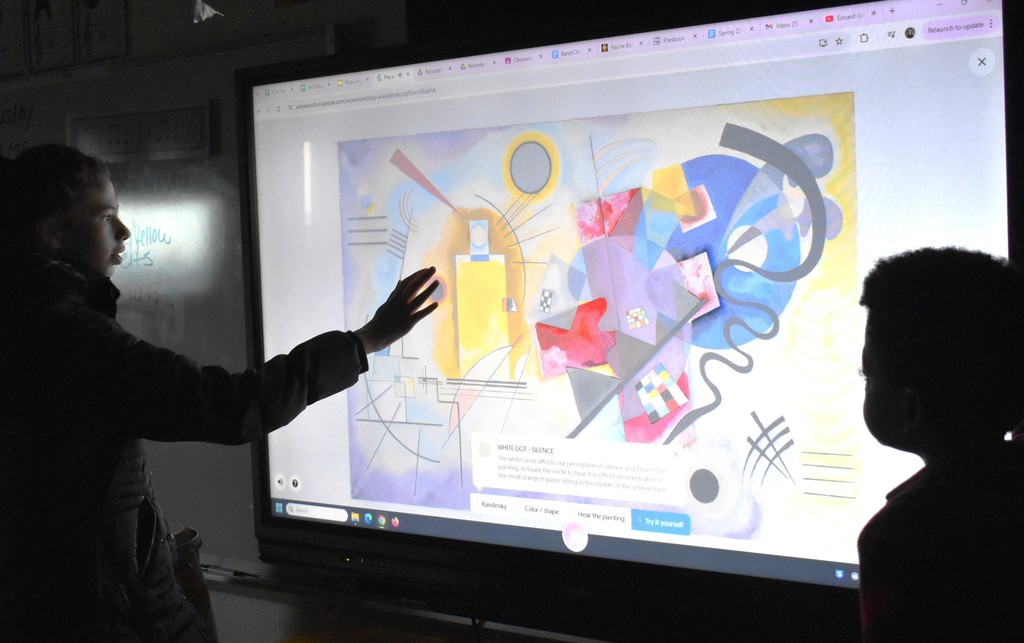

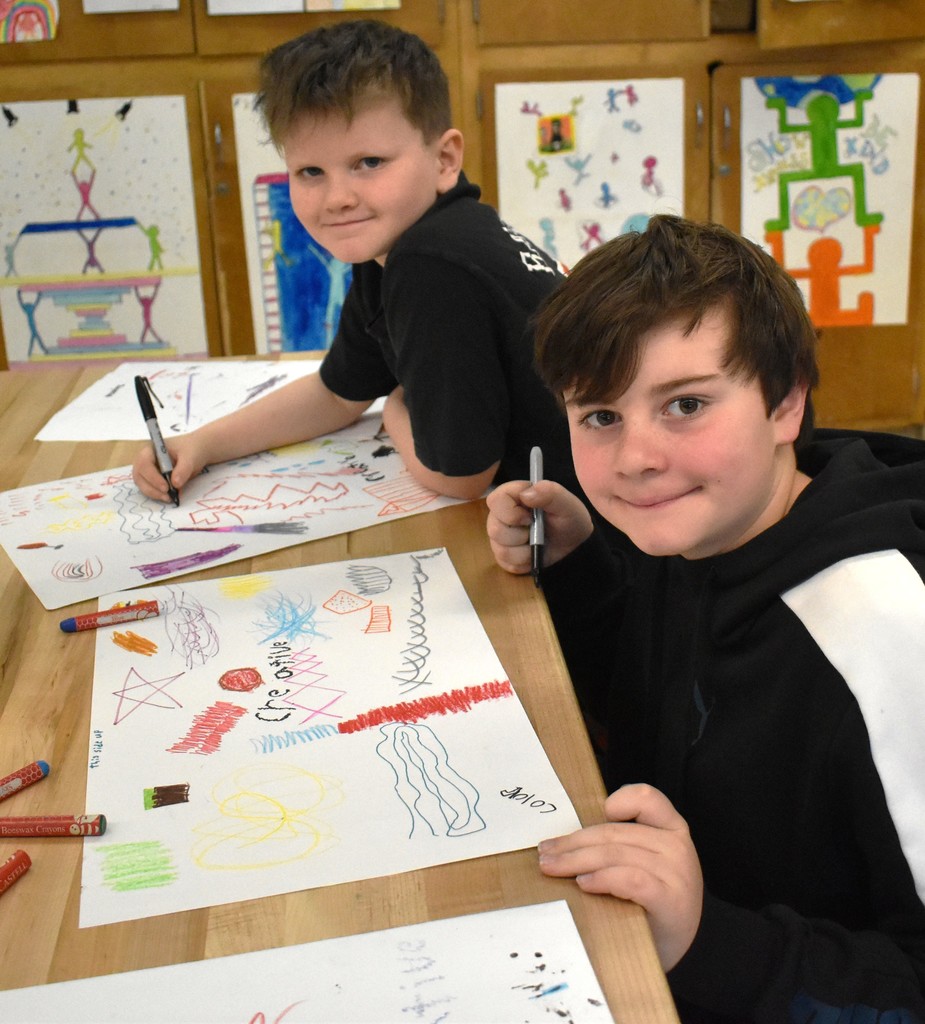
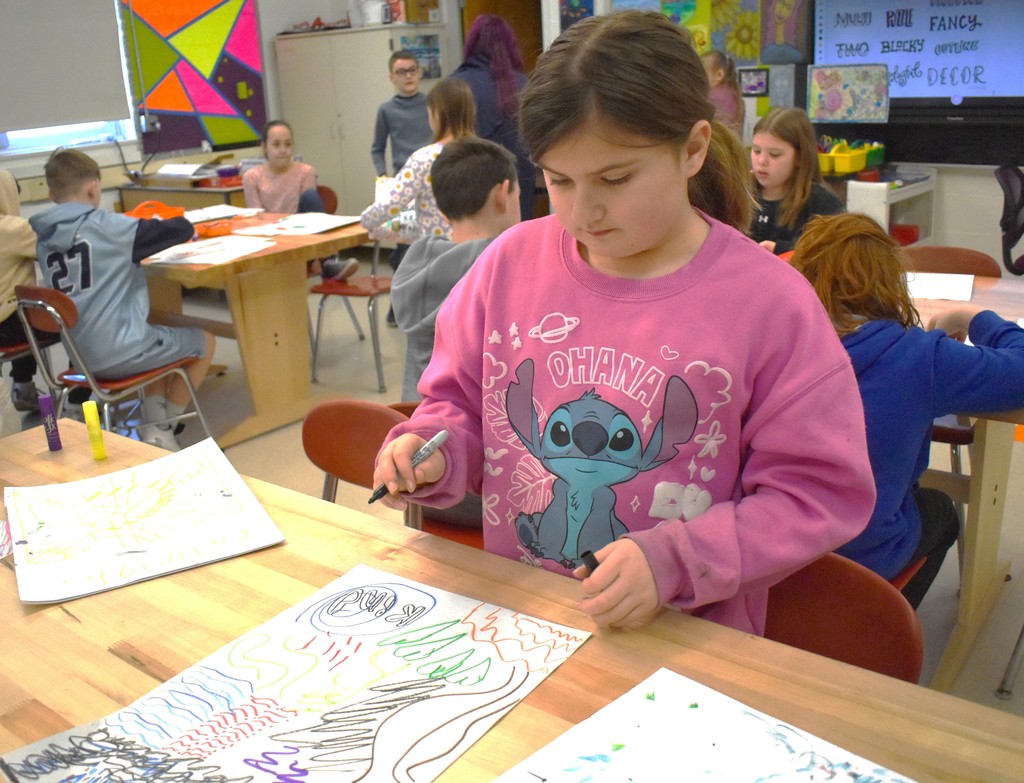

Sally Mankoo’s ES kindergarteners, like other district kindergarteners, have been learning about seasons and weather. In the last lesson of the unit, they learned a big word: Meteorologist! Students also learned about cumulus, stratus and cirrus clouds as well.
A project aligned with these lessons was the creation of “cloud spotters.” Students made their unique “spotters” so when they went outside, they could identify the type of clouds they saw. They glued the cloud pictures on their spotters decorated them with paint and other personalization items and used them during a recent windy day to identify the cumulus clouds in the sky! Take a look!
Cumulus clouds are puffy and white like cotton balls, while stratus clouds look like flat white sheets hovering overhead. Cirrus clouds come with rain-free weather and look like white wisps high up in the sky.





March is Women’s History Month, and IS Librarian Amiee Hardy was thrilled to find out that the IS Library won a Women’s History book bundle! These new books are welcome editions to the library’s collection! Remind your IS student these are great books to check out and read!
Women's History Month is a celebration of women's contributions to history, culture and society and has been observed annually in the month of March in the United States since 1987. The 2025 theme is “Moving Forward Together! Women Educating & Inspiring Generations.”


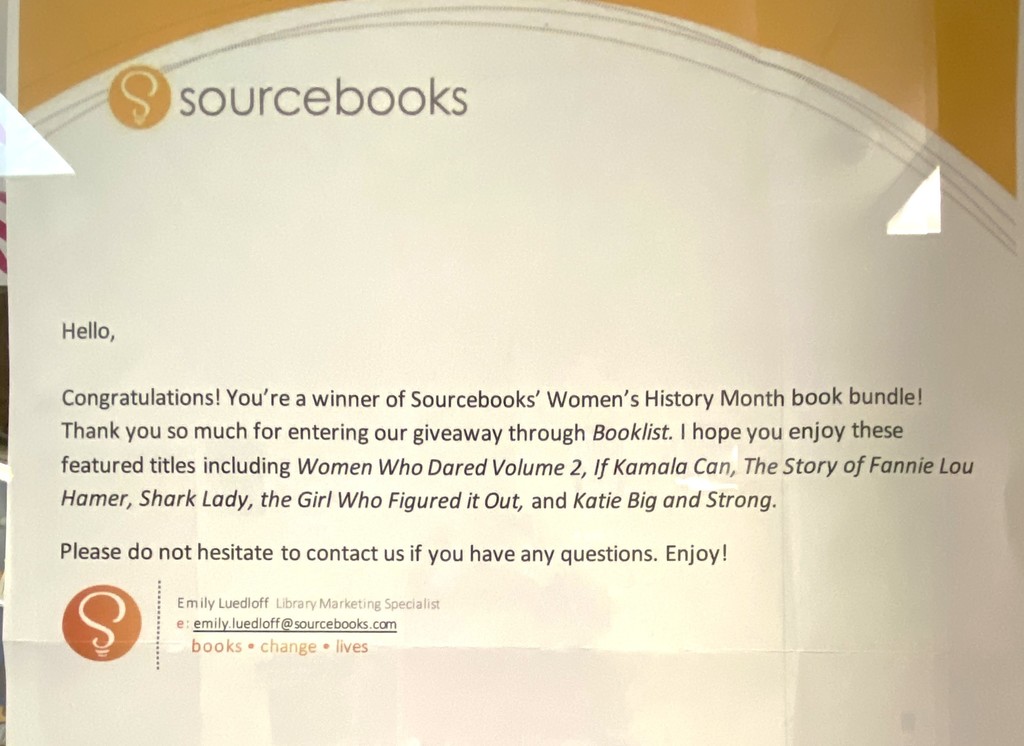

Ilana Kaufman’s second-grade art students grade students are exploring fiber arts by learning how to weave on a loom.
Here’s the fun part: Students made their own looms by painting paper plates with decorative line details! Students are using yarn and an “under/over” repetitive pattern to create a circle weaving work of art. Each design is beautiful and unique!
Paper plate looms also give students a chance to further build fine motor skills. There are even some math connections, too, as students have to think about measuring and pattern making.


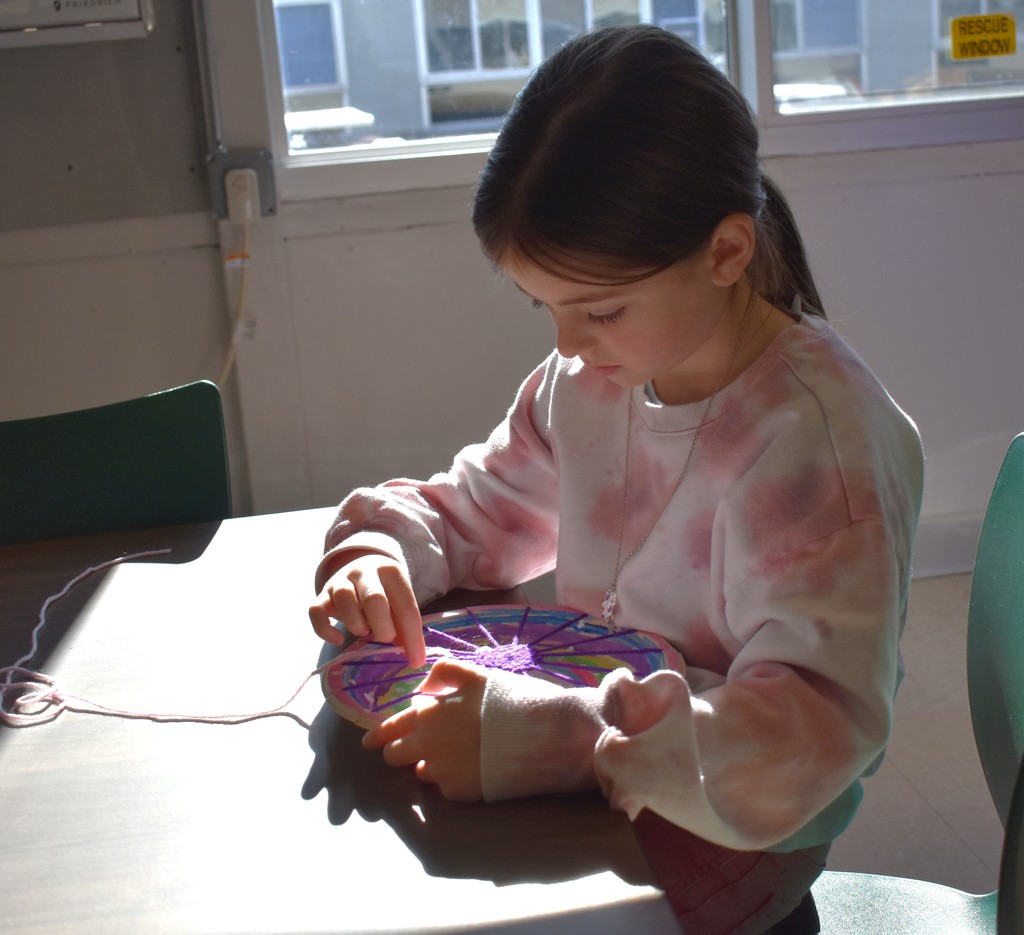
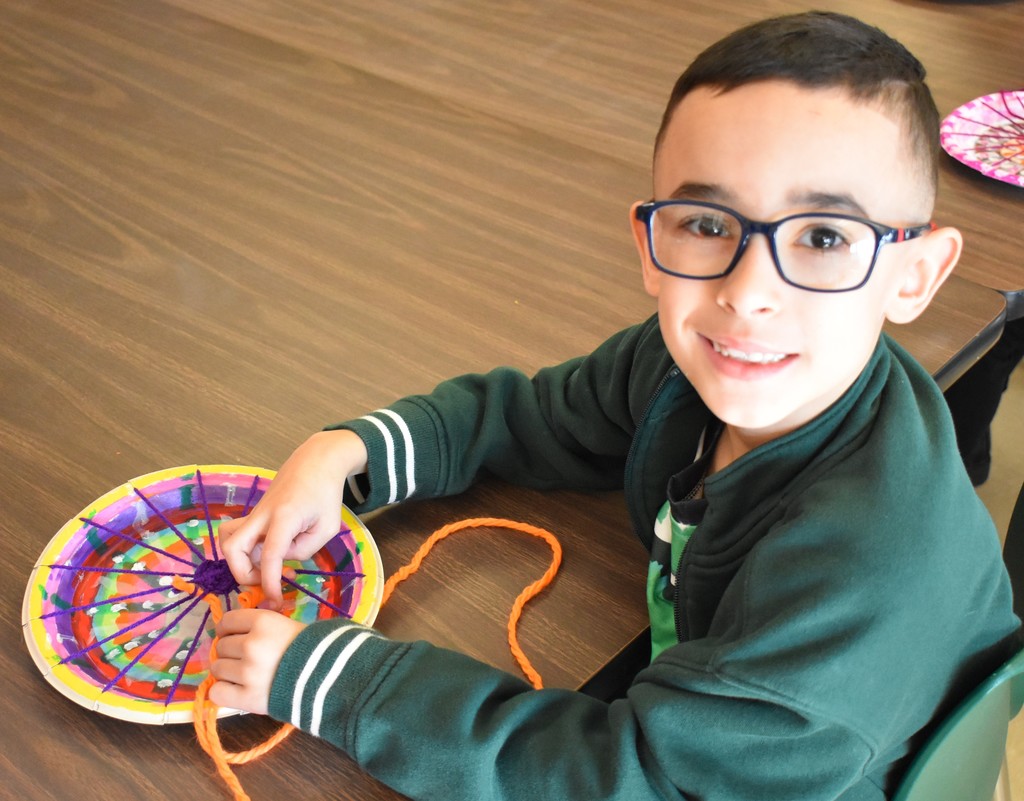


Christopher Tuthill’s High School technology classes activities sometimes expand beyond the curriculum for each class. Take a peek at Mr. Tuthill’s recent class presentations on the process of making maple syrup!
The goal of the demonstrations was to expose students to an activity that is unique to the northeastern United States and Canada while incorporating a STEM component to the lesson!
“We do cover types of lumber and tree identification in construction class and that was a part of my conversations with my students,” he said. “But there’s also a connection to science, technology, engineering and math as well throughout the syrup making process.”
Students learned about the history of maple syrup, tree identification, the process to tap maple trees, the boiling/evaporation process and more, including:
•Science: Students learned about the density of liquids, weather patterns, tree identification, parts of a tree (bark, sapwood, heartwood) biology- how a tree feeds itself to produce leaves each year (photosynthesize)
•Technology: Students learned the methods of sap collection, vacuum systems, evaporation processes and tools and machinery used, including the use of a hydrometer to understand sugar content
•Engineering: Students learned the methods of efficient sap collection and the process to make and bottle the final product
•Math: Students learned the ratios, or averages, for sap collected to final product made, sugar content percentage of both sap and finished syrup, boiling time, fuel consumption, tree diameter and circumference
It was the perfect STEM activity/lesson/demonstration for students to witness and participate in!
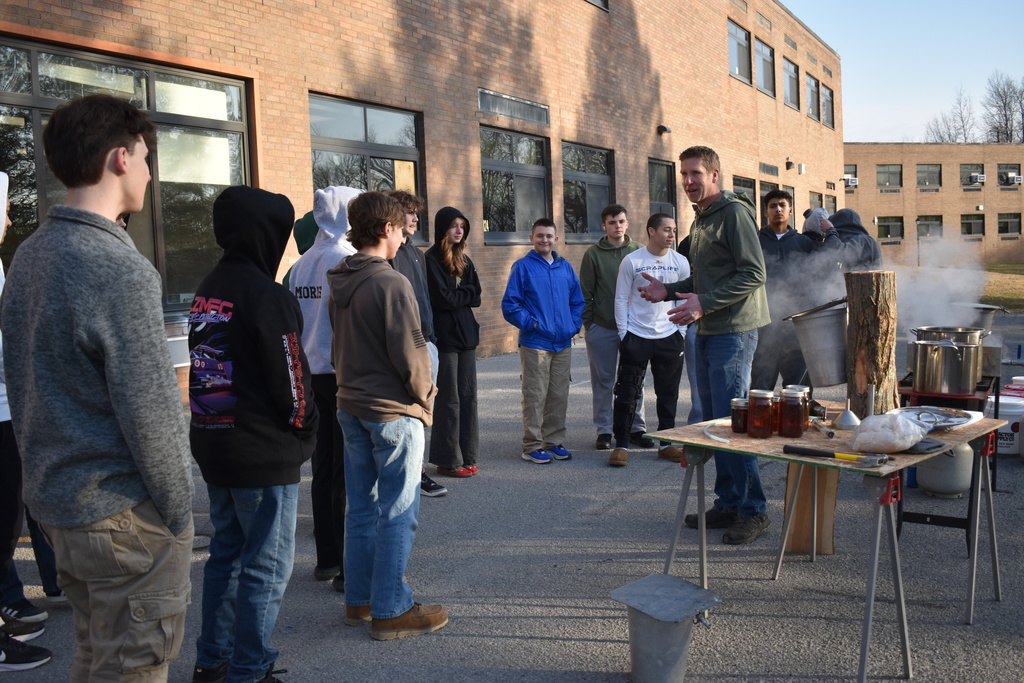


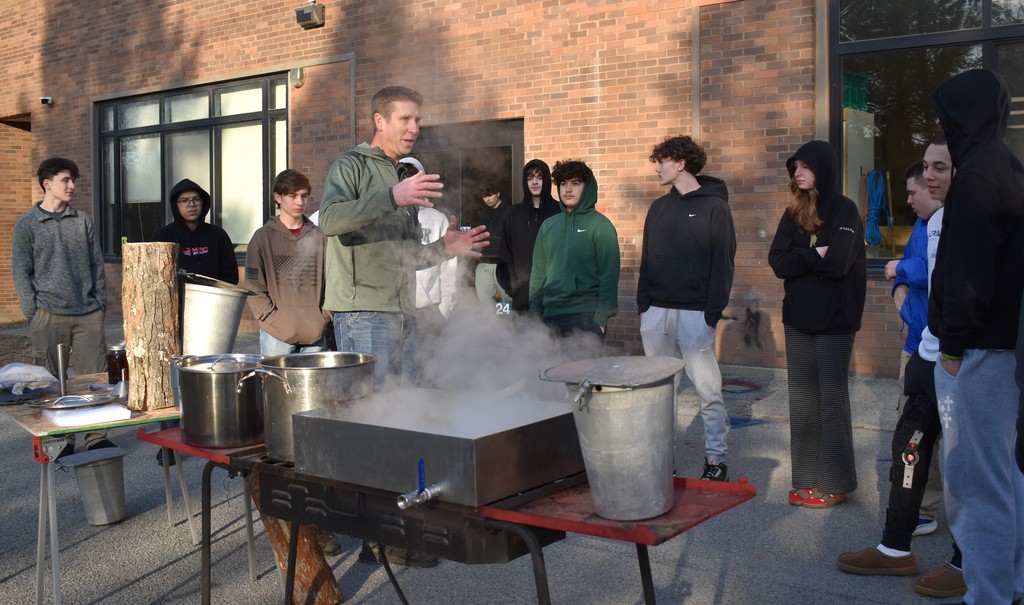
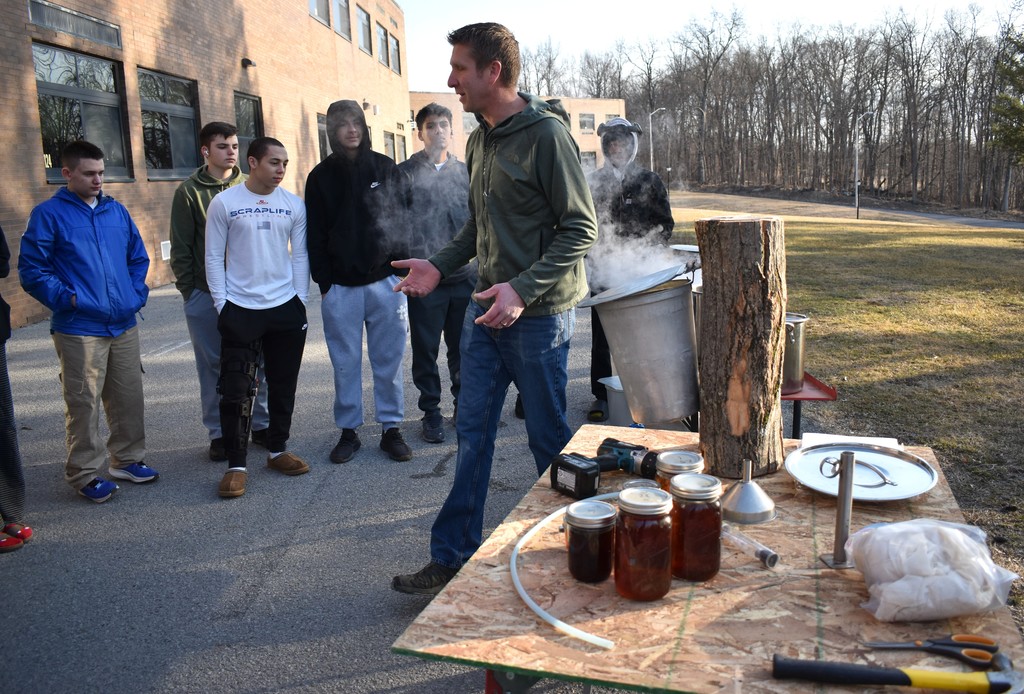
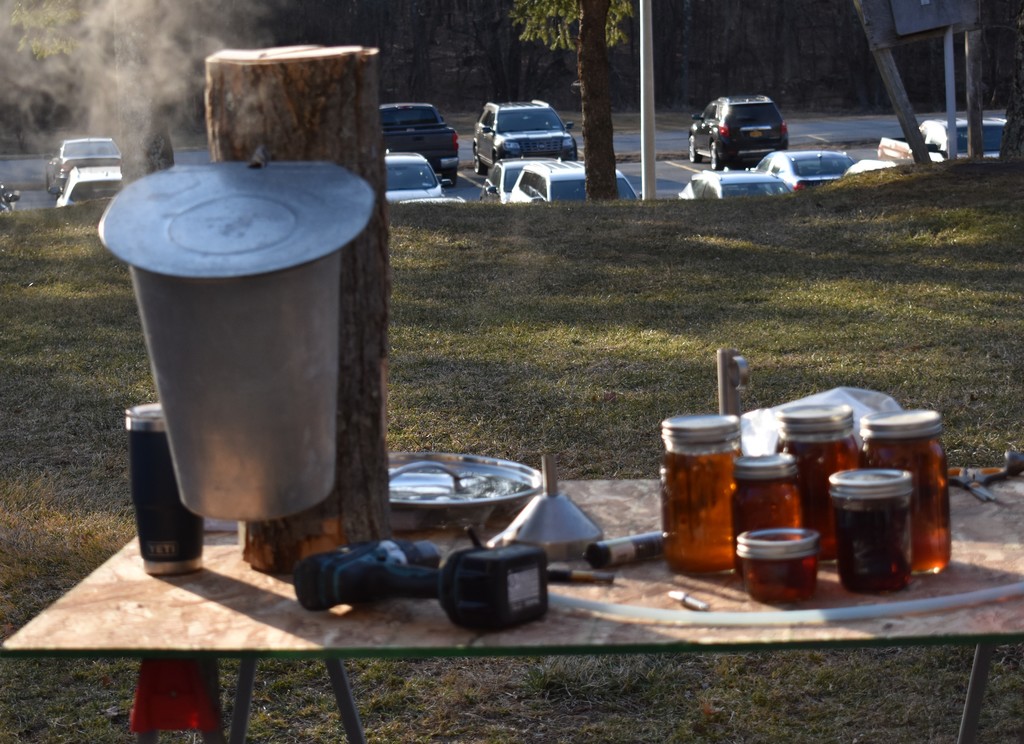
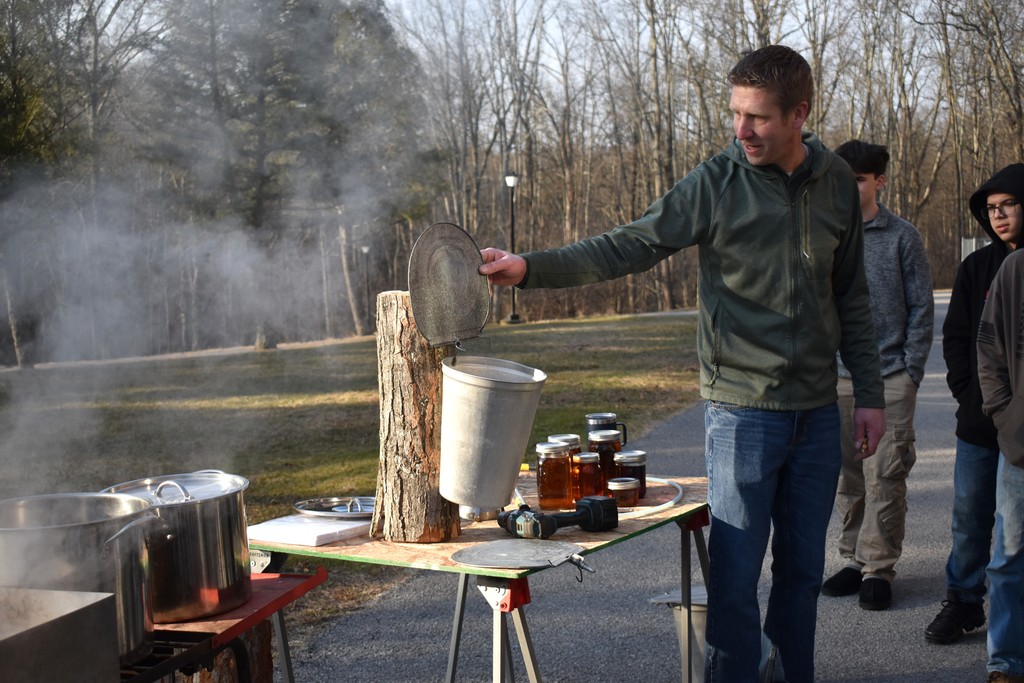
ARE YOU READY? IS YOUR BRACKET SET? MARCH MADNESS officially begins with a 6:40 p.m. tip off tonight when the St. Francis Red Flash meet Alabama State in the first of two “First Four” games.
But! Middle School Spanish classes have just completed their own MARCH MADNESS- type tournament today, March 18, with Spanish music called "Locura de Marzo!"
“Locura de Marzo” is a Spanish music tournament created by a group of Spanish teachers that takes place every March. It's similar to March Madness, but instead of college basketball teams, it's Spanish songs! This year, there are more than 215,451 students in 1,350 schools in all 50 states and 13 other countries, including the Middle School, who participated!
How it works:
•Spanish teachers around the world select 16 songs
•Each day, two songs compete against each other
•Students listen to the songs and vote for their favorite
•The winning song moves on to the next round, and the losing song is eliminated
At the Middle School, students all selected the songs that they liked in their own brackets and whoever had the most correct choices at the end of all of the rounds wins! Felicidades a los ganadores del soporte Maggie Pason y Lennox Addo!
What a great way to expose students to the Spanish language through music! Plus, “Locura de Marzo” also exposes students to new music styles and artists; helps engage students with real-world content; and helps students develop at cultural connection to different styles music!

